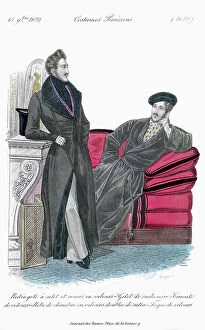Velvet Cap Collection
"The Timeless Elegance of the Velvet Cap: A Glimpse into Fashion Through History" Throughout history, the velvet cap has been a symbol of sophistication and style
All Professionally Made to Order for Quick Shipping
"The Timeless Elegance of the Velvet Cap: A Glimpse into Fashion Through History" Throughout history, the velvet cap has been a symbol of sophistication and style. From renowned beauties to powerful monarchs, this accessory has adorned the heads of many notable figures. One such beauty was Paula de Viguier, also known as La Belle Paule. Living from 1518 to 1610 in Toulouse, she captivated hearts with her enchanting looks. Her signature look included a velvet cap with feathers, perfectly complementing her tied-back hair. She completed her ensemble with a surtout decorated with pearls and lace collar and sleeves – truly a vision of elegance. Another influential figure who embraced the allure of the velvet cap was Margaret of France, Duchess of Berry. Born in 1523 as King Francis I's daughter, she exuded regal grace throughout her life. Margaret donned a velvet cap that harmonized flawlessly with her tight-bodiced velvet dress and ruff collar. Slashed sleeves added an element of flair while holding a feather fan completed her majestic appearance. Even kings were not immune to the charm of this headpiece. In portraits like that of King Henry VII Tudor or King Edward VI as a young man, they both sported the timeless velvet cap alongside their royal attire – orbs, scepters, doublets – showcasing their power and refinement. Moving forward in time brings us to Richard James' portrait from c. 1744 where he proudly wears his own version of the velvet cap at Middle Temple. The etching captures his confident gaze framed by this fashionable accessory. The popularity continued well into later centuries; Rembrandt depicted himself wearing one in his self-portrait from 1638 while Ferdinand Bol showcased it on young men through his etchings in 1637. Not limited to Europe alone is Theodore Gericault's portrait painted between 1791-1824.











